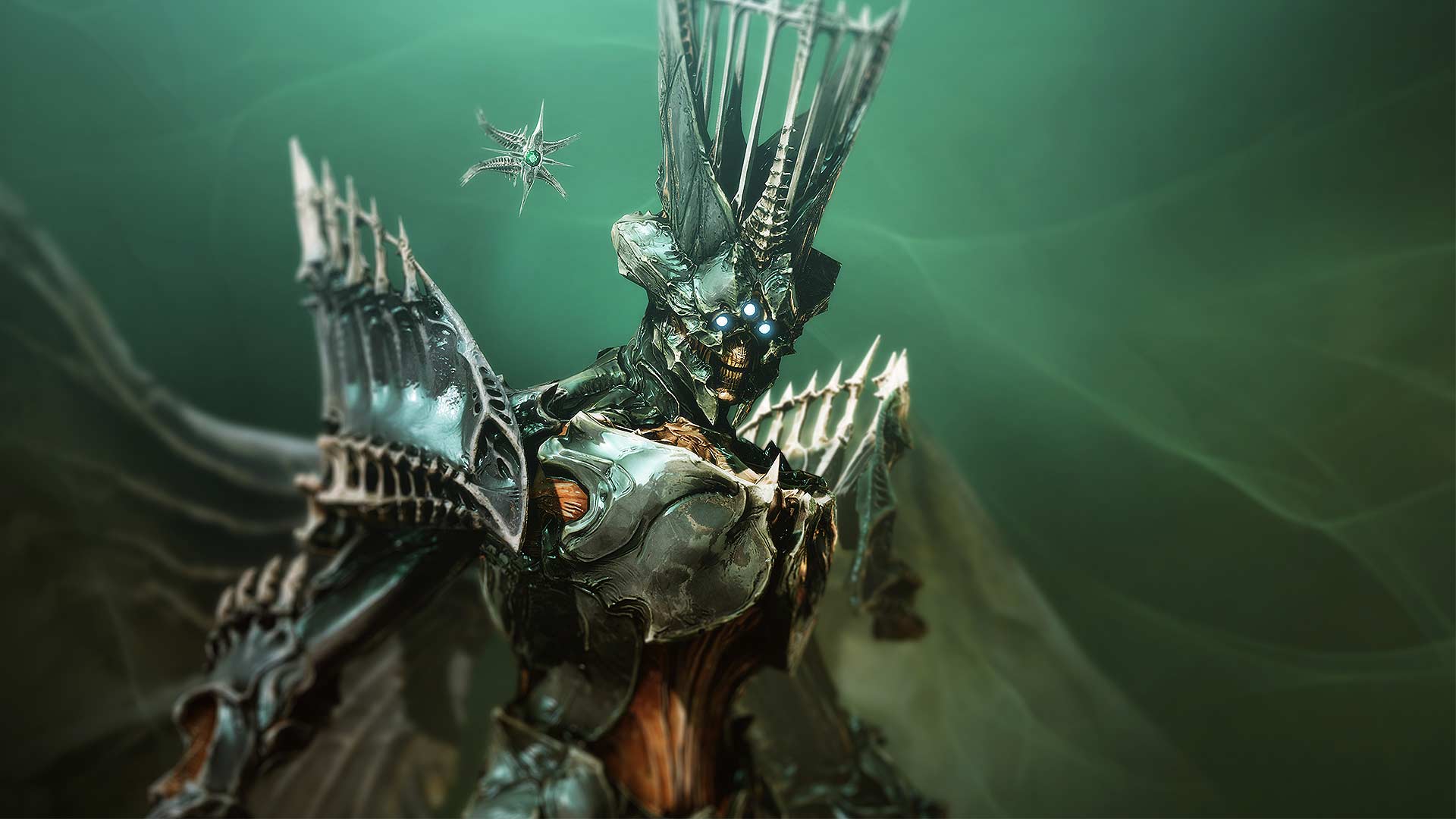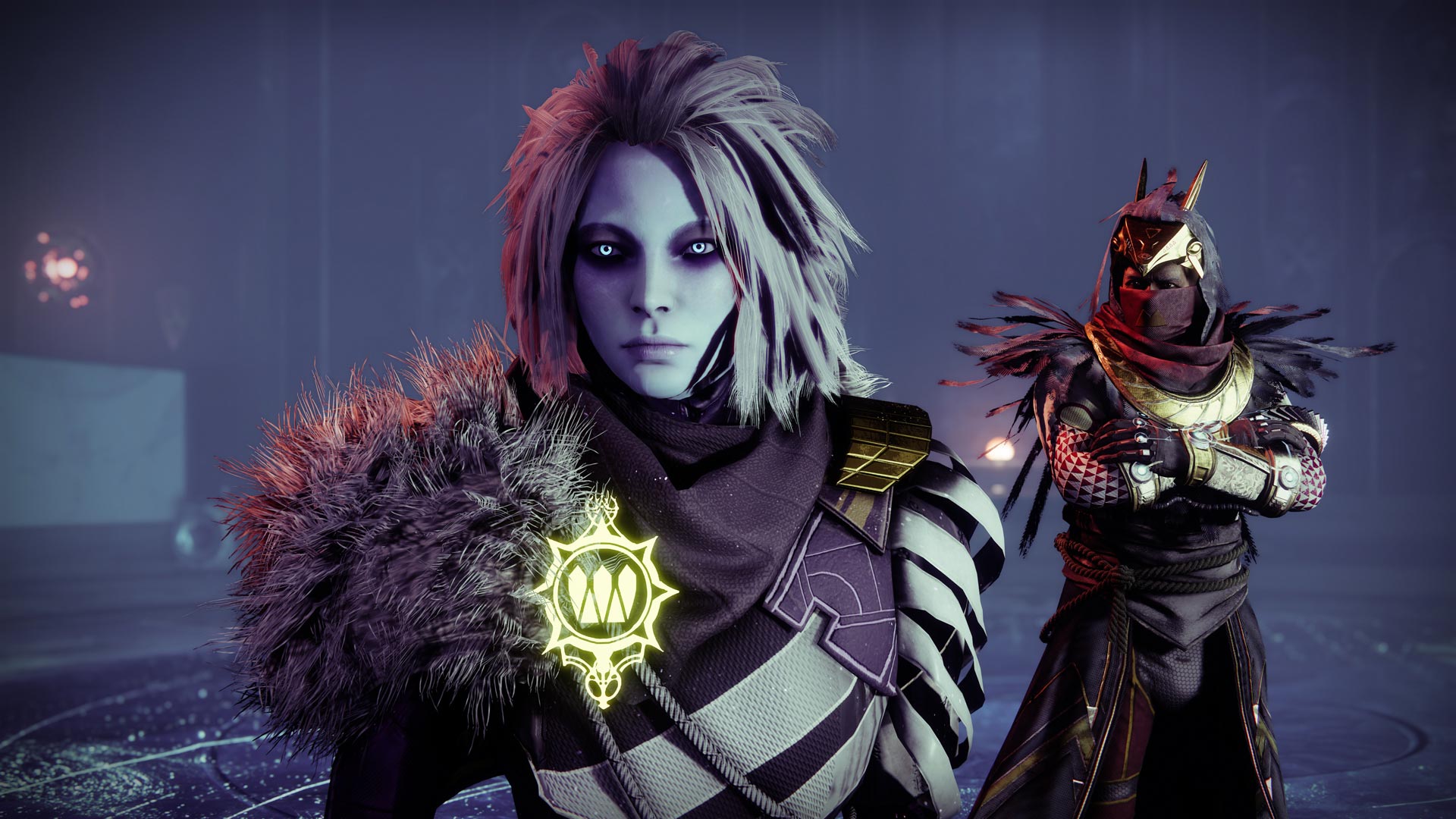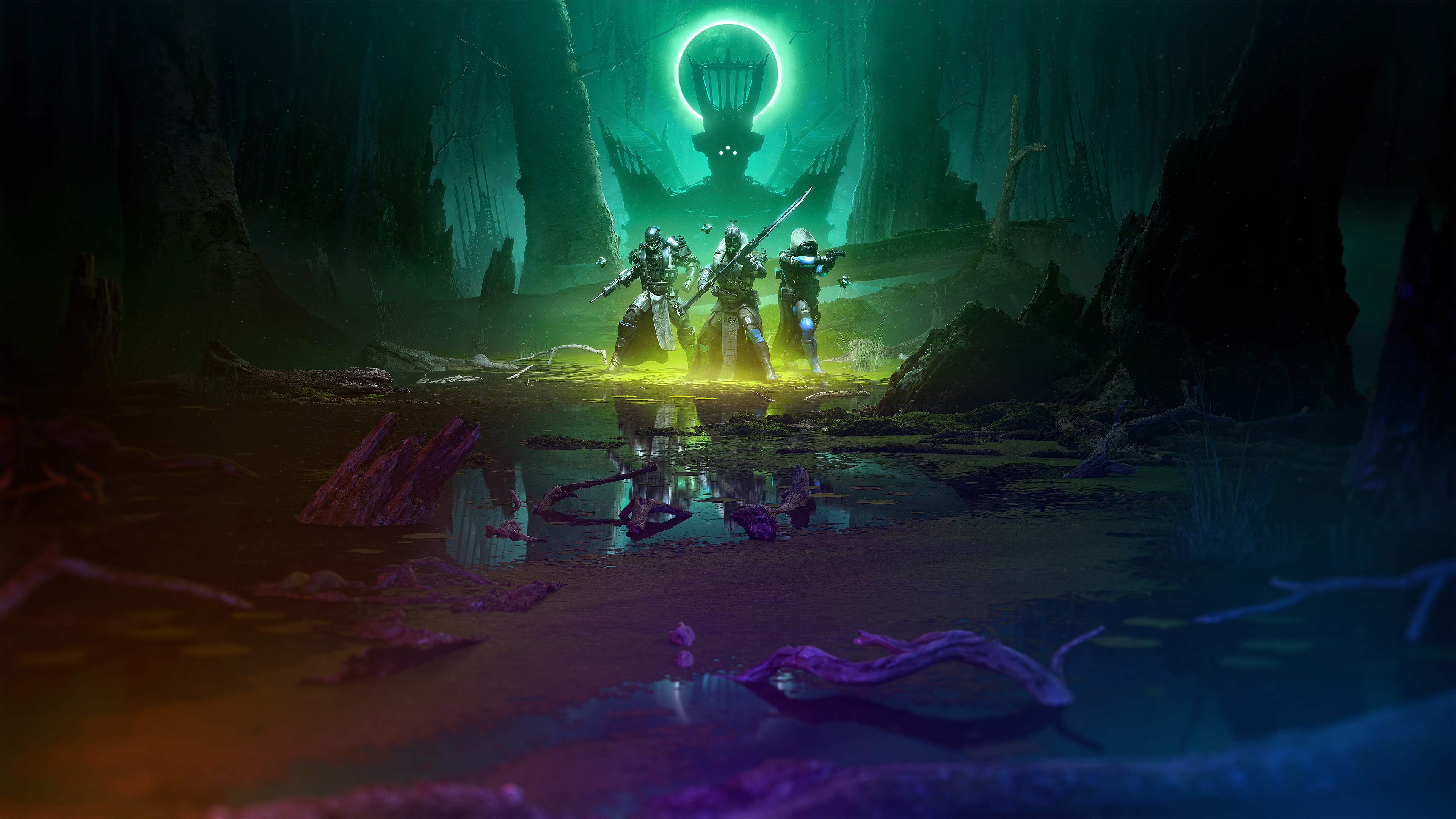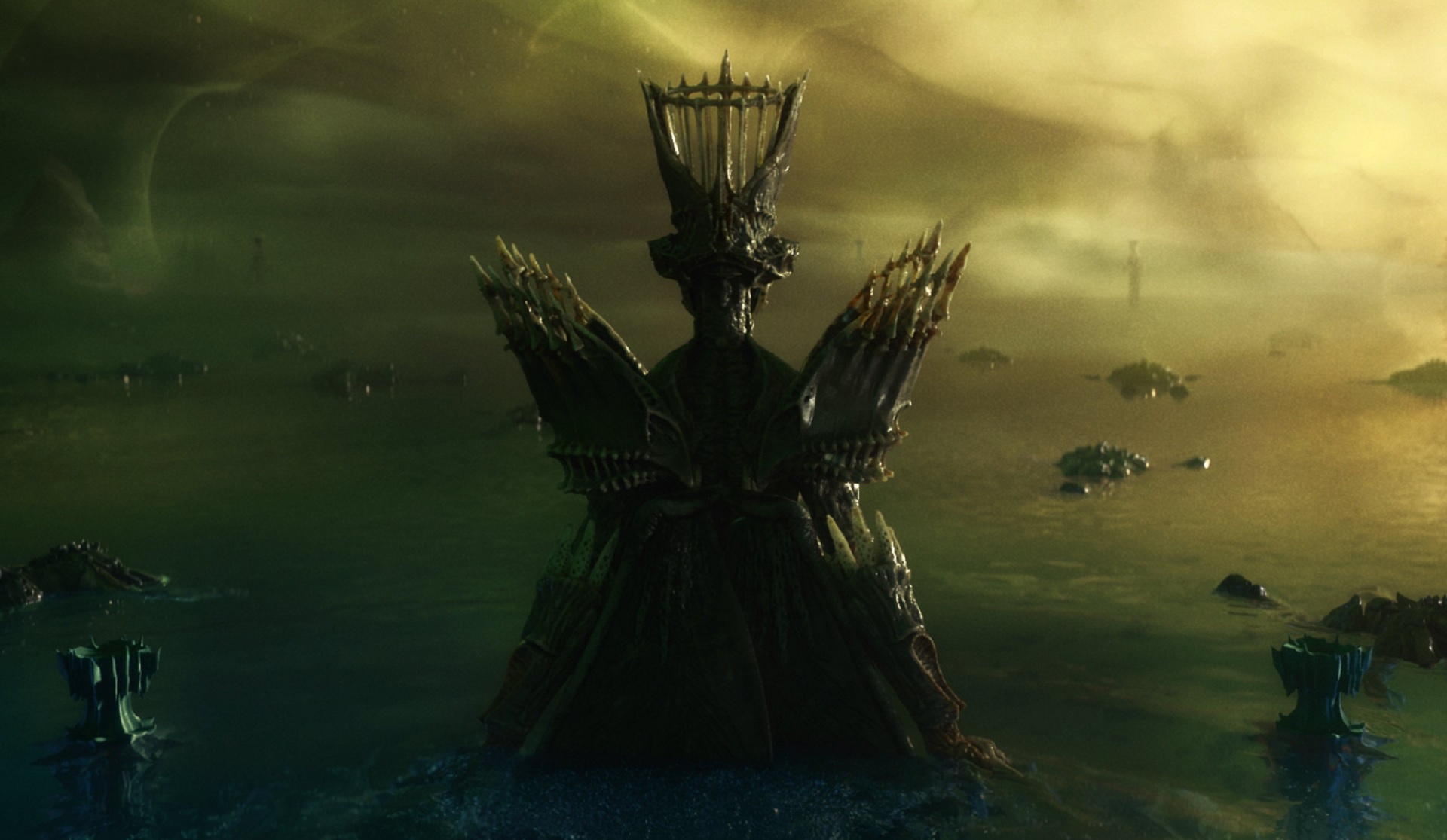How Bungie made Savathun Destiny 2's best villain yet and turned seasons into gripping TV shows
Bungie on The Witch Queen build-up, Year 4's success, and Year 5 comebacks: "There aren't any other live service games leaning this much into narrative"

It feels like Destiny 2 players randomly looked up from their Vaults this year and went, "Dang, the story's gotten good, hasn't it?" I certainly did. After struggling to meaningfully connect its expansions and seasons for several years, Destiny 2 has quietly (and sometimes loudly) become the best live service narrative around – a game that other live games should be studying. Destiny's always had a rich universe filled with compelling characters, but we've never seen it all arranged and presented so engagingly, let alone for a whole year.
Not to doubt Bungie's writing chops, but how did Destiny 2's story get so good, and seemingly so quickly? After years of hearing that Destiny's brightest days are still to come, it feels like we've reached a new peak. These are the brightest days. Even so, Bungie is still looking onward and upward with plans for yet more ambitious storytelling and countless tricks for players to experience. It's turning seasons into gripping TV shows and building a caliber of villain the series has never seen, and these thus-far successful experiments will ripple out across Year 5 and beyond.
Destiny is a TV show now

"Around the time of [Season of Arrivals] we sat down as a narrative team and had a conversation about the types of stories that we wanted to tell and how we wanted to tell them, and we saw ways to improve," explains Julia Nardin, senior narrative lead on Destiny 2. "One of those was really leaning into the serialized nature of Destiny's story and ensuring that we were telling a cohesive, serialized story across multiple seasons and expansions where all the threads connect to each other."
"We did it a lot like a television show where we road mapped where we wanted to go and talked about the best way to get there," she continues. "We landed on this model where we'd have at least six to eight weeks of really solid narrative where there's a major beat each week, or several beats each week. Whether it's a story mission, new [voiceover], a Helm radio message, a vignette where there are characters in this space and action playing out in front of you rather than a cinematic. Just making sure that we have enough narrative content to last six to eight weeks, with a story that is self-contained with a clear beginning, middle, and end that leads to a larger narrative arc."
To my knowledge, there aren't any other live service games leaning this much into narrative
Julia Nardin
"It was a conscious decision and I think over the last year we've seen ways we can continue to refine that model to make our stories even more engaging and compelling as we move forward into next year and beyond," Nardin continues.
The ongoing Season of the Lost, which will take us into February, is following this same model, and it's only getting better. Each week, we sit down for at least one good chat with some combination of Mara Sov, Petra Venj, Ikora, Crow, and Savathun herself, among other characters. This provides a nice, offset dose of exposition before we set out for the usual weekly reset to-do list, and it gives the game an effective and memorable way of communicating the stakes of the current arc, even as players turn their brains off to shred aliens in the new seasonal activity. Threats and motives are always clear and believable, and that's made each season easier and more exciting to follow.
And the universe is the cutting room floor

Bungie didn't stumble upon a magic formula that suddenly solved all of Destiny's story issues. The studio has had to poke at this method for quite some time, refining its approach on two key fronts. "When you're working on a game that's primarily a first-person shooter, primarily a looter-shooter and MMO-lite, traditionally the systems used to prop up an FPS game are not necessarily cohesive with systems used for telling story," explains senior narrative designer Nikko Stevens. "That presents one challenge immediately, but I think Bungie has done a really good job over the course of the development of Destiny to invest in some of those tools that are not primarily based in shooting enemies. They're more based in being able to move the story forward or have deeper interactions with the gameplay itself."
Weekly digests, tales from the communities you love, and more
One constraint here is choosing a cast who can carry the story forward. Destiny's rich universe is sometimes a burden; there are tons of characters fighting tons of battles at any given moment. How does Bungie pick and choose what and who to put on stage? The answer, Nardin tells me, is triage.
"One of the challenges we have with the stories we're trying to tell, because we've got multiple seasons in a year and we have a very small window in which to write a season, work with the other disciplines, and create this cohesive thing, is there's not a lot of room to do all the things that we want to do," she says.
"We triage stories and characters. It would've been amazing if we could've included Eris in Season of the Lost, but as we were writing the list of characters who would be invested in what's going on, we've got Crow in front of Mara Sov, so we need Mara Sov. We need Petra. We knew we were revealing Osiris to be Savathun, so automatically we need Ikora involved because Osiris was her mentor and she's one of the leaders of the Vanguard. We knew we needed Saint involved because Saint was Osiris' partner. It gets to a point where we can't put any more characters into a story without diluting the quality of the story we're trying to tell. Eris didn't quite make the cut, but it doesn't mean we're not interested in telling stories with Eris. It just means we're going to tell that story in a different release."

Despite these challenges, this new model is working, and working well. As a result, Bungie's only going to push it harder in the future. "We compared what we're doing to serialized television a lot internally and externally," Nardin says. "To my knowledge, there aren't any other live service games leaning this much into narrative and making sure every week there's something new that's progressing the story. That's working very well for us."
"If you take away anything from this conversation, I would say we're going to be doing more of that and find new ways to do that," she affirms. "We're really happy with some of the storytelling channels we've developed over the last year. The Helm messages on the radio where people can overhear conversations they might not necessarily need to overhear have been really great for us. Characters tend to behave differently when they don't think you're listening. You get to see new sides to Zavala and Ikora. You get to see a new side to Mara Sov this season, which I think is really exciting."
Stevens echoes Nardin's thoughts, highlighting "all the teams that worked on the Helm and all these systems that have allowed us to kind of push narrative in a more forthright way." He adds: "I want to keep hammering on stuff like that... You're starting to see more character interactions in the game world, and that's something I'm really excited about, having more of that happening in the future."
Who is Savathun?

The Season of the Lost is the final bit of red carpet for all this, and Savathun is smack in the middle of it. The Hive god of deception, the unseen hand, the sister of the war god Xivu Arath and the fallen god Oryx. Savathun is The Witch Queen's witch queen. She's the big bad raising an army of Hive Guardians. Or at least, she will be. Just a few weeks ago, she was Osiris, lurking right under our noses. Right now, she's a statue that poses no immediate harm. In fact, she's been positioned as a tenuous ally this season. But Bungie didn't make a whole expansion about fighting Savathun for no reason, right? Nor did it needlessly release a trailer for the Witch Queen literally hours before the Season of the Lost began and Savathun casually walked up whispering yet more pretty assurances.
"Obviously we knew people were going to see The Witch Queen trailer before they jumped into Season of the Lost, right?" says Stevens. "So, one, we want Savathun to be front and center. You're gonna meet her immediately. There's no reason to hold her back, and especially after Season of the Splicer, we wanted players to be in a position where, you know, Osiris was pretty sus at the end of that season. We wanted players to look at that and go into Season 15 thinking, 'Oh man, we need to do something about Osiris.' We bought into that immediately."
"We knew that we wanted to give the player face time with her," Nardin says of Savathun's abrupt appearance. "We have these conversations with her every week. We really wanted the player to form a personal relationship with Savathun over the course of the year. That allows the player to emotionally invest in something or in someone, and that automatically raises the stakes for the expansion. We want people to go into that with mixed feelings, and not feel 100% sure that what they're doing is the right thing."

"Because she's always been such a secretive and deceptive character, it's hard to pin down exactly who she is, especially if you're not somebody who reads into a lot of the lore books or if you haven't been playing the game a long time," says Stevens. "We wanted to make sure players had a really good idea of who she was."
We've never seen this kind of setup for a big villain in Destiny 2 before. As Nardin puts it, Destiny "has a habit of introducing the antagonist in the expansion they're defeated in, and that's not super satisfying from a narrative perspective." Destiny 2's 2020 expansion, Beyond Light, hammered this home by hastily writing off its villain Eramis after a brief campaign. After so much build-up, so much lore, grimoire and mystique, it would be sorely disappointing to see Savathun yanked off-stage just as quickly.
We want people to go into that with mixed feelings, and not feel 100% sure that what they're doing is the right thing.
Julia Nardin
Thankfully this, too, is changing with The Witch Queen. Nardin says Bungie is actively working to build more enduring and diverse villains, partly to prove that "not all the members of the alien races are bad just like not all the people who inhabit the city are good." But more to the point, she says Savathun will have more staying power than previous baddies.
"There's definitely a conscious effort there," Nardin confirms. "It's why we didn't kill Caiatl there in Season of the Chosen either… We've seen a lot of conversations about Savathun like 'Can we trust her? Is she telling the truth?' and there is this divide in the community, which is what we wanted," Nardin observes. "'Oh, she's not what she thought, maybe we should trust her' versus 'You guys are falling for it! She's the queen of deception!' We kind of structured the entire spine of the last year and change around that."
Stevens adds that "all these characters that believe they're moving forward by their own motivations are somewhat influenced by the Witch Queen," and I can't shake the feeling that he's talking about our Guardians too.
We don't talk about that

Just as Destiny 2: Year 4 has become much more than Beyond Light, Year 5 will be more than just The Witch Queen. Savathun's presence and actions will be formative, but Bungie has plenty more in store as Destiny 2 builds toward the release of Lightfall and The Final Shape in 2023 and 2024, which will cap off the series' long-running Light and Darkness saga.
For one, Nardin says we haven't seen the last of Caiatl, the surprising Cabal ally introduced in Season of the Chosen. Mithrax and Saint-14 will likewise take center stage again. Calus, Destiny 2's first raid boss and Caiatl's father, is also "out there waiting, doing something, we're not really sure, but we're really excited to continue to do things with him." And Stevens reckons players haven't yet realized just how important Xivu Arath is and will be.
To close things out, I asked about the newly reintroduced sidearm Spoiler Alert. The flavor text on this gun reads: "Someone is going to die." The last time we saw this thing was in the Warmind DLC which preceded Forsaken and the death of Cayde-6. It can't be a coincidence that it's back now, right?
"It's not a coincidence," Stevens says. "That's all I'll say."

Austin has been a game journalist for 12 years, having freelanced for the likes of PC Gamer, Eurogamer, IGN, Sports Illustrated, and more while finishing his journalism degree. He's been with GamesRadar+ since 2019. They've yet to realize his position is a cover for his career-spanning Destiny column, and he's kept the ruse going with a lot of news and the occasional feature, all while playing as many roguelikes as possible.


